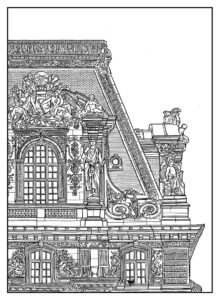Cats of The Louvre, Paris: A Storied Haven for Feline Residents. The Louvre Museum, an iconic symbol of art and history nestled in the heart of Paris, stands as a testament to human creativity and ingenuity. Housing an unparalleled collection of art spanning centuries, the Louvre's corridors not only echo with the whispers of history but also hold a lesser-known secret—the beloved feline residents who call this grand establishment their home.
While visitors flock to admire the Mona Lisa, the Venus de Milo, and other masterpieces, a unique group of inhabitants roams the museum's vast halls—the cats of the Louvre. Unbeknownst to many, the Louvre plays host to a small population of cats, weaving an unexpected charm into the museum's mystique.
These feline denizens aren't officially employed or sanctioned by the museum. Rather, they've made the Louvre their home, thanks to a long-standing tradition of cats helping protect priceless works of art from rodents that could potentially damage these treasures. Their presence dates back to the time when the Louvre was a royal palace, and cats were introduced to curb the rodent population that threatened the precious artworks and historical documents.
While their primary role is to maintain a vigilant watch over the premises, the cats have become a cherished part of the Louvre's community. They navigate the museum's nooks and crannies, forming an integral part of its behind-the-scenes charm. Visitors often catch glimpses of these feline sentinels as they patrol the gardens or sun themselves near the majestic pyramid entrance, adding a touch of warmth and familiarity to the grandeur of the Louvre.
The museum staff and guards have developed a fondness for these resident cats. Their presence adds an air of comfort and homeliness to the vast and sometimes overwhelming surroundings. Staff members take it upon themselves to ensure the cats are cared for, providing them with food, shelter, and medical attention when needed.
The cats of the Louvre have become somewhat of an internet sensation, with visitors sharing stories and photos of these furry guardians on social media platforms, sparking curiosity and adding a layer of enchantment to the museum's allure.
Their influence goes beyond mere pest control; the cats have unwittingly become symbolic of the Louvre’s soul—a blend of history, elegance, and the unexpected. They embody the spirit of guardianship, silently preserving the treasures of human history.
In conclusion, the Louvre, a paragon of human creativity, is also a haven for a unique group of residents—the endearing cats who maintain a humble but essential role in safeguarding its legacy. These feline protectors stand as a testament to the museum's rich history and the ongoing commitment to preserve and cherish the treasures within its walls. Their presence not only adds a touch of warmth but also serves as a reminder of the interconnectedness between the past and present, enriching the Louvre's timeless splendor.
As visitors traverse the storied halls and marvel at the artistry within, the silent but ever-watchful guardians—the cats of the Louvre—continue their duty, a testament to the unity of history, art, and the delightful presence of our feline friends.
The tradition of employing cats as guardians of the Louvre can be traced to the period when the site was a royal palace. Rodents posed a significant threat to the valuable art collections, manuscripts, and documents housed within the sprawling estate. To tackle this issue, the royal court introduced cats to control the burgeoning rodent population.
These feline guardians, valued for their natural hunting instincts, proved to be an effective solution in safeguarding the palace's precious contents. Over time, the practice of employing cats as protectors of the Louvre became deeply entrenched in its history, with the tradition continuing even as the palace evolved into a museum.
As the Louvre transitioned into a public museum, the role of the cats remained vital. However, their significance expanded beyond mere pest control. These feline residents became an integral part of the Louvre's identity, fostering a unique and endearing connection between the guardians and the historical ambiance of the museum.
Throughout the museum's history, the cats adapted to the changing landscape of the Louvre. Their presence, while unofficial, became a cherished aspect of the institution, with staff and visitors alike developing an affection for these four-legged protectors. Even though the official stance of the Louvre might not explicitly endorse or maintain the cat population, the staff and some visitors have continued to care for these furry inhabitants, recognizing their historical importance and their contribution to preserving the museum's heritage.
The cats' legacy within the Louvre persists, symbolizing a living connection to the past. Their ongoing presence serves as a reminder of the enduring traditions and the long-standing methods employed to protect the priceless artworks and artifacts housed within the museum's walls.
The story of the Louvre cats intertwines with the tale of human history, representing an unassuming but indispensable thread in the narrative of this renowned institution. Their role in maintaining the sanctity of the Louvre's treasures reflects a unique and enduring partnership between humans and their feline counterparts, perpetuating a tradition that spans centuries and enriches the cultural fabric of this iconic museum.
Louvre Curious as a Cat Simon Fieldhouse
